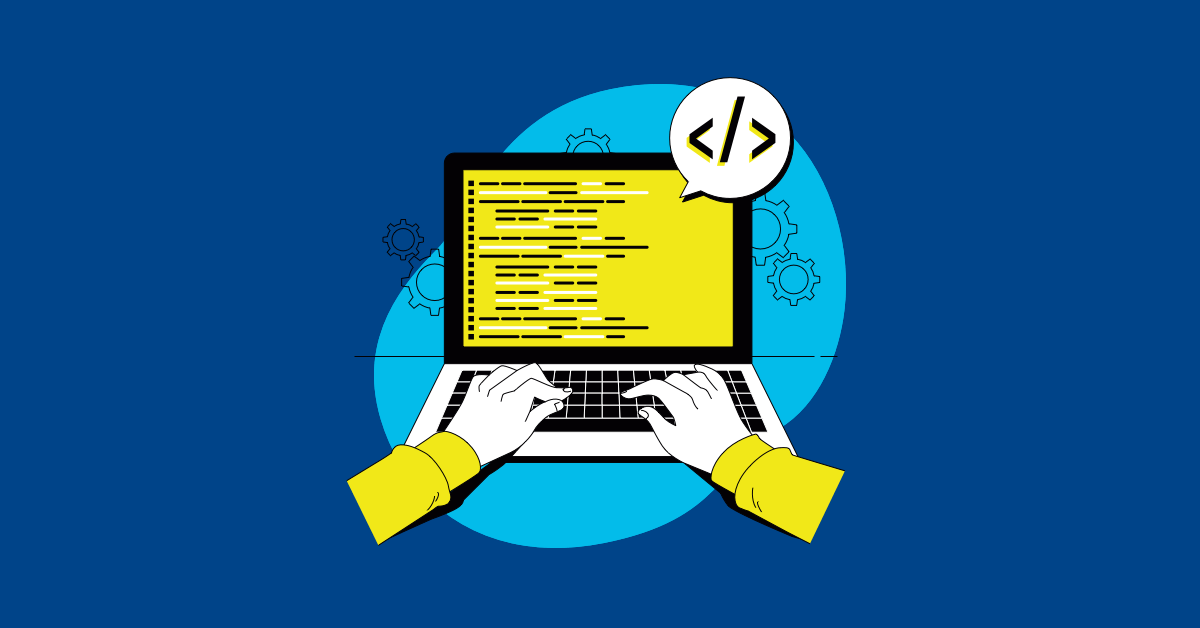Automation testing has become an increasingly crucial component of software development. It promises faster testing cycles and early bug detection. It makes it possible to conduct repetitive tests without human intervention. These factors lead to more robust products and satisfied end users.
However, as the demand for automation testing grows, so does the debate over whether coding skills are necessary in this domain.
Is a deep understanding of programming languages an essential requirement for automation testing? Or can testers, with the aid of no-code/low-code testing tools, effectively contribute to the automation process without writing a single line of code?
Automation testing involves using specialized tools to control the execution of tests. The tester compares actual outcomes with expected ones, sets test preconditions, and performs other control and reporting duties. It’s a crucial part of software testing, especially in Agile and DevOps environments, where rapid and frequent software deployments are the norm.
The key benefits of automation testing include:
- Efficiency: Automation test cases run much faster than their manual counterparts, significantly reducing testing time.
- Reusability: Automation tests can be reused across different software versions, ensuring consistent test coverage.
- Accuracy: Automated tests are not prone to human error, ensuring high accuracy.
- Cost-Effectiveness: While the initial investment for automation can be significant, the long-term benefits in time and resources can be substantial.
- Scalability: Automated tests can be easily scaled to fit the needs of the software, making it a valuable asset for growing applications.
With these advantages in mind, it's natural to wonder where coding fits into the equation.
For those new to automation testing, here are some actionable tips to set you on the right path:
Assess Your Needs and Environment
Start by assessing the requirements of your current project and the software you are testing. This evaluation will dictate the level of technical skill required and guide your learning path.
Invest in Learning
Invest the time to understand the basics of automation testing, emphasizing scripting. This practice will equip you with the skills to handle the most common automation tasks.
Practice, Practice, Practice
The adage “practice makes perfect” holds here. Write scripts. Practice with the scripting language du jour. Try different scenarios. Familiarize yourself with industry-standard testing frameworks and tools.
Seek Guidance
Don't hesitate to seek guidance and mentorship from experienced developers and automation testers. They can provide insight into industry best practices, tools, and strategies for effectively leveraging coding in automation.
Coding vs. No-Coding Tools
No-code/low-code automation testing tools have revolutionized the field, making it more accessible to those without a programming background. These tools often sport user-friendly interfaces and allow testers to build automated tests by defining actions through the tool itself without writing any code.
No-code tools aim to democratize automation. They empower team members without coding skills to contribute to the process. They encourage more types of stakeholders to engage in testing and reduce the need for specialized technical skills.
However, these tools have limitations. They excel at simple tests but struggle with anything more involved that requires dynamic data handling, advanced logic, or complex test setups. No-code tools lack the flexibility and robustness of traditional coding methods.
No-code tools are ideal for:
- Rapid prototyping and initial tests: They allow for a quick succession of prototypes to test an application's core functionality before deciding on a long-term automation strategy.
- Processing simple user activities: These tools can be very productive for simple processes such as login/logout and basic form submissions.
- Engaging a broader team: Enabling non-technical team members to contribute to the automation process builds a more cohesive community.
However, it's important to consider a test's long-term requirements. While a no-code tool might suffice under present conditions, evolving needs might eventually exceed its capabilities, potentially creating costly technical debt.
Benefits of Coding Skills
Regardless of the rise of no-code tools, coding skills are still a powerful asset in the automation testing toolkit.
Coding skills give testers unparalleled control over their test scripts. It enables detailed customization, from handling unexpected events to interacting with various system API levels. When developers and testers work with the same codebase, this control can lead to more comprehensive test coverage, as tests are written with a granular understanding of the underlying code and requirements.
When dealing with intricate software, working directly with the source code can be the only effective way to manage complex test scenarios. Testers with coding skills can help ensure that the automation adapts and evolves alongside the software. They can also better organize automated tests, facilitating maintenance and reducing the likelihood of fragile, high-maintenance test suites.
Well-structured automated tests are easier to maintain and reuse. Coding allows testers to create functions, classes, and modules that can be shared across multiple test cases, promoting the reusability of code snippets. This, in turn, reduces duplication, maintenance overhead, and the probability of inconsistency in testing methodologies.
Close control and supervision of code enable automation test suites to integrate into the broader development pipeline. This integration can include shared version control and deployment (CI/CD) practices, ensuring that testing and development are always on the same page in the SDLC.
While no-code tools are effective under existing conditions, a tester who codes is adaptable — prepared for the future with the skills to pivot when necessary — especially as software systems grow in size and complexity. Companies cannot overstate the value of striving to future-proof themselves in an industry known for its rapid technological advancements.
Levels of Coding Expertise
The level of coding proficiency required for an automation testing role varies significantly depending on the specific context and toolset. While advanced programming knowledge might be crucial for certain roles or products, a basic understanding of scripting could be sufficient for others.
Basic Scripting
At the most fundamental level, automation testers should be comfortable writing and understanding scripts. This typically involves:
- Writing simple tests in a basic scripting language like JavaScript or Python.
- Creating reusable test scripts to efficiently cover various scenarios.
- Performing tasks like interacting with web elements, handling pop-ups, and validating behavior.
Advanced Programming
An in-depth knowledge of programming provides testers with a baseline understanding of automation and lays the groundwork for further skill development.
Advanced programming skills become indispensable in more complex environments, such as those with extensive API usage or where performance and load testing are critical. Testers with these skills can leverage various frameworks, libraries, and methodologies, tackling complex test scenarios effectively and efficiently.
The Middle Ground
Many automation testers find themselves in a middle ground, where a more comprehensive understanding of programming languages is beneficial but not necessarily for actually writing automated tests. This knowledge can greatly assist in communication with developers, understanding test environments, and troubleshooting issues effectively and independently.
Examples
To illustrate the impact of coding in automation testing, consider the following examples.
Simple Login Test: Coding vs. No-Coding Scenarios
A straightforward login test — where a user enters a username and password, hits the submit button, and verifies a successful login — can serve as a litmus test for the capabilities of coding and no-coding approaches.
A scenario like this could be quickly addressed with a no-code tool, allowing testers to create a flow via a visual interface. However, as complexities arise due to various error messages, two-factor authentication, or even localization, the limitations of the no-code approach may become clear. In such cases, coding skills enable testers to handle a range of potential scenarios, ensuring that the test comprehensively covers all possible outcomes.
Testing Complex Functionalities: The Role of Coding
Advanced features, like complex business rules, multi-step processes, or tricky data validation, often need a coded approach to automation testing. Testers who code can simulate real-world scenarios, using the full power of programming logic to provide structure. While no-code tools can speed up test creation, coding skills are the backbone that supports its evolution. They provide the flexibility, depth, and visionary potential necessary to excel in automated testing.
Conclusion
Coding remains a valuable and often indispensable skill within the domain of automation testing. It allows for customizability, detailed control, and the flexibility to address complex testing scenarios. Further, it enhances test coverage, promotes code reusability, and ensures seamless integration into the development pipeline.
However, the debate about coding skills' overall value persists. Ultimately, the necessity of coding is completely dependent on the role's demands and the complexity of the tested application. Advanced programming skills may be absolutely crucial in some scenarios, while fundamental scripting skills may suffice in others.
Automation testing tools are rapidly evolving, with no-code solutions offering efficient alternatives for more straightforward test scenarios. This diversity in tools and approaches signifies a broadening horizon for automation testing, where the value of coding skills is balanced with the practicality and accessibility of no-code platforms.
The best course of action for any tester interested in pursuing a career in automation is to keep learning, experimenting, and an open mind. The future of testing, just like its present, is in good hands — be they the code writers' or code wranglers'.



.png)
%20(1).png?width=150&height=69&name=MuukTest-logo---light-background%20(3)%20(1).png)
